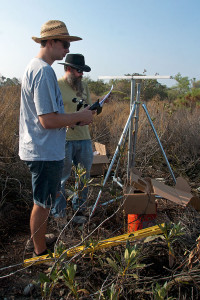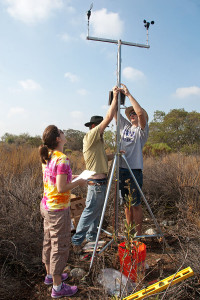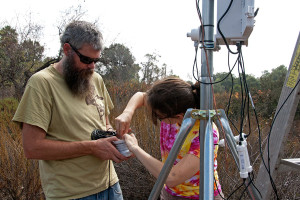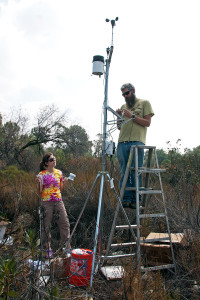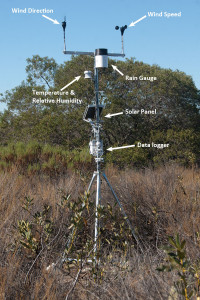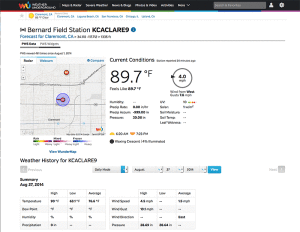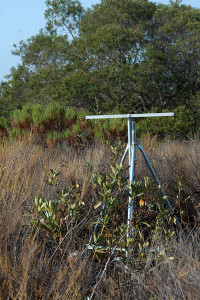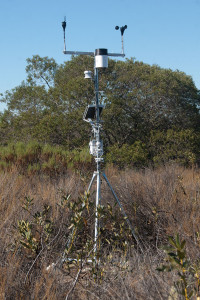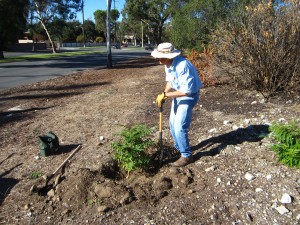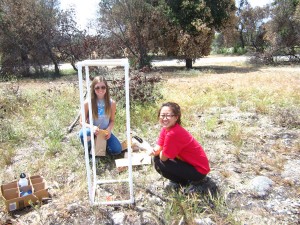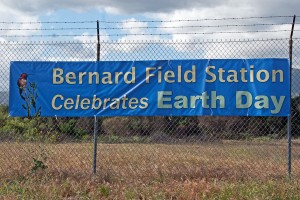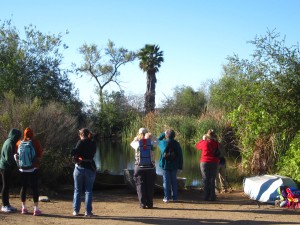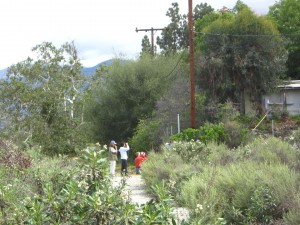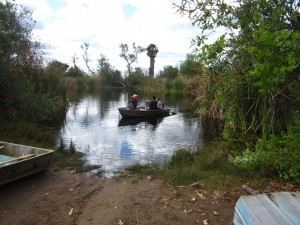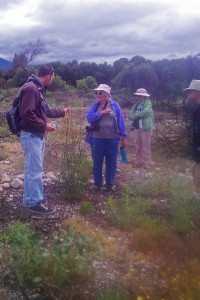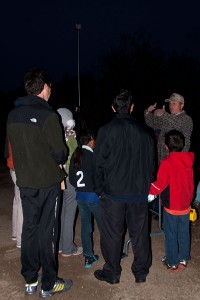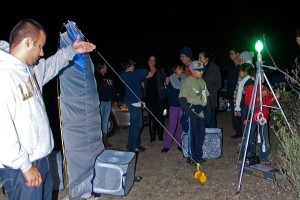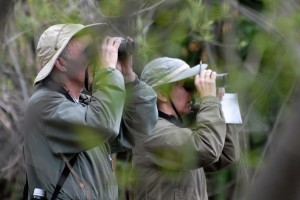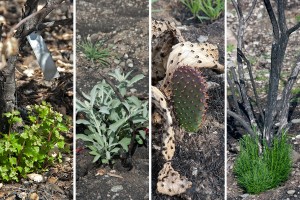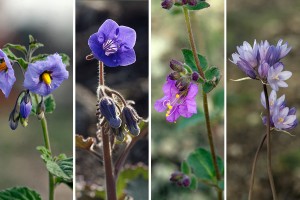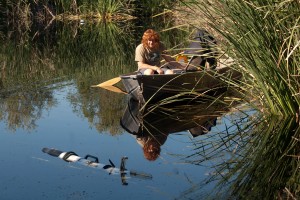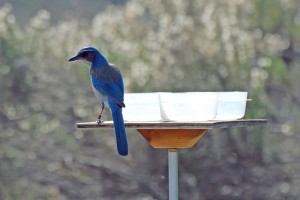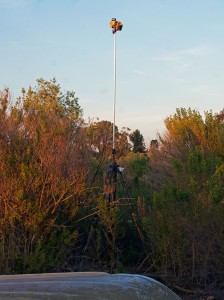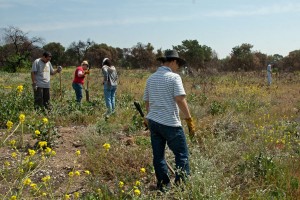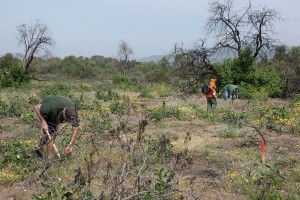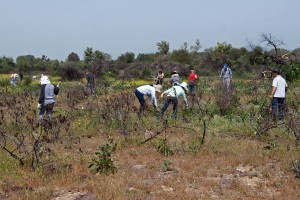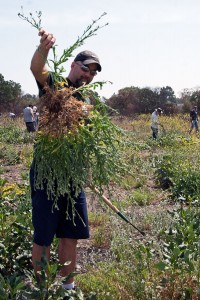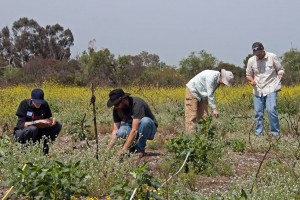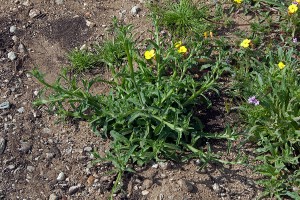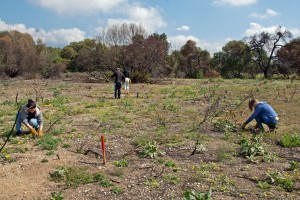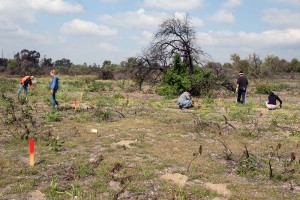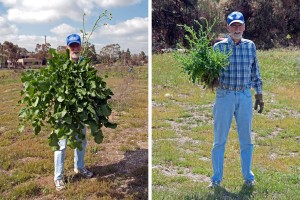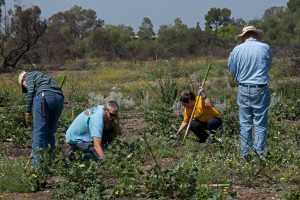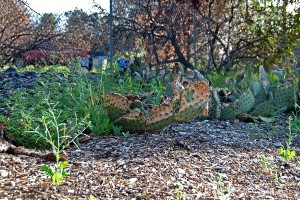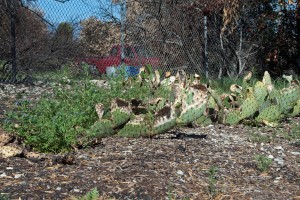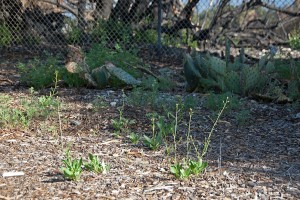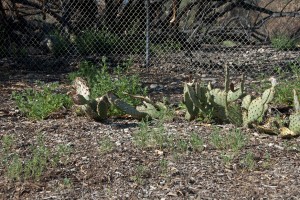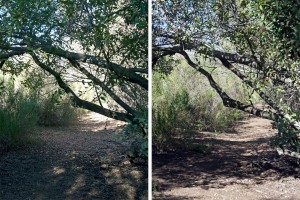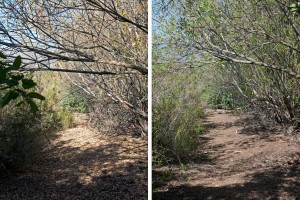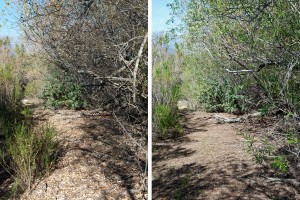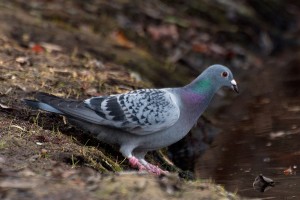New vegetation is coming up in the that area burned last September in the Foothill Fire. Part of the burn area is in the east field, which was once cleared and was covered with a mixture of non-native grasses and recovering coastal sage scrub. A cursory look at this area gives the impression that a relatively greater proportion of the new growth consists of native plants and non-native forbs than was the case before the burn. Keck Science Prof. Diane Thomson’s research group, which has maintained experimental plots in the burned area for quite a few years, has confirmed this impression quantitatively – seedlings of the non-native Bromus grasses are many fewer in the burn area this year than in previous years.
Non-native grasses can be abruptly replaced by native and non-native forbs following a fire because many of the dominant annual non-native grasses in California lack seed dormancy, while seed dormancy is prevalent among forbs. Forb dominance is typically transient, however, because the grass seeds that do survive a fire multiply to resume dominance after a few post-fire seasons. (See, for example, Moyes et al. 2005). In fact, fire reduces potential competitors and adds nutrients to the soil, so that the grass seeds that do survive flourish, producing large, lush plants.
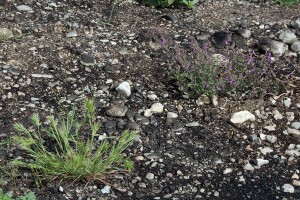
A large clump of Red Brome (Bromus madritensis ssp. rubens) and a California Four O’Clock (Mirabilis laevis var. crassifolia) in the East Field burn area. ©Nancy Hamlett.
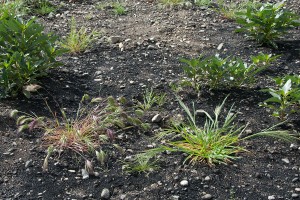
Large clumps of Red Brome (Bromus madritensis ssp. rubens) and Ripgut Brome (Bromus diandrus) going to seed in the East Field burn area with sprouting Yerba Santa (Eriodictyon trichocalyx var. trichocalyx)and some other small grasses in the background. ©Nancy Hamlett.
Thus we wanted to see whether removing the small number of thriving non-native grass plants as well as non-native mustards and thistles would help keep the burned areas from reverting to grassland. To test this strategy, BFS Director Marty Meyer first laid out twelve 10 m x 10 m plots in an east-west line through the burn area. Each two adjacent plots were treated as a pair, with one plot randomly assigned to the treatment plot to have non-native grasses removed and one left as a control plot.
On Saturday, February 15, volunteers removed all large non-native grasses, particular Bromus species, and non-native mustards from the six experimental plots. We also removed some large Bromus clumps that were going to seed from immediately outside the plots and in the buffer area between plots, so they wouldn’t release seed into the nicely de-weeded areas.
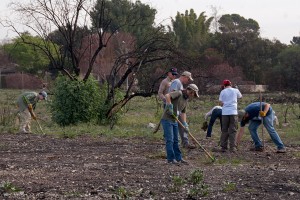
Kyle Jensen (Pomona ’17), Tim Cox, Paul Stapp (CSU Fullerton), Anwen Evans, Carol Cox, Ben Stapp, and BFS Director Marty Meyer remove non-native grasses and mustard from one of the experimental plots. ©Nancy Hamlett.
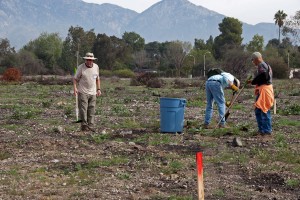
Terry Donovan checks for remaining weeds in an experimental plot, while Mike Tschudi and Dean McHenry remove some large brome and mustard plants from the adjacent buffer zone. ©Nancy Hamlett.
The photo below shows one of the experimental plots before and after weeding. The red-topped stakes mark the corners of the experimental plots, and the plain stakes to the right mark the western edge of the paired control plot. The small plants remaining in the experimental plots in the ‘after’ photo are natives – mainly Yerba Santa and annuals.
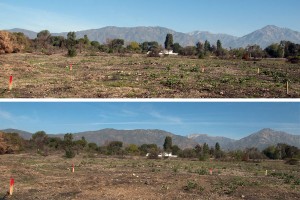
One of the experimental plots in the east field before (top) and after (bottom) weeding. ©Nancy Hamlett.
We will keep removing the grass and other invasive non-natives throughout the growing season. We will be very interested to see what effect the treatment has!
Reference:
- Moyes, A.B., M.S. Witter, and J.A. Gamon. 2005. Restoration of native perennials in a California annual grassland after prescribed spring burning and solarization. Restoration Ecology 13: 659–666. abstract | article | pdf
Tags: Bromus diandrus, Bromus madritensis, California Four O'Clock, grass, Mirabilis laevis, mustard, volunteers
